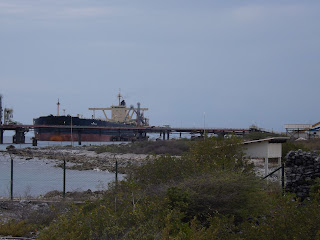Our new Casita trailer is fully self-contained and light enough to tow with our small SUV.
We tried all winter to find a used Casita or Scamp fiberglass trailer but they are so popular it proved impossible, so we ordered a new one from the Casita factory in Texas. After snagging the Casita, we made a great circle looping from the suburbs of Dallas through Missouri, Nebraska, the Black Hills of South Dakota, the Pryor Mountains Wildhorse Refuge in Montana, Yellowstone National Park to see our son Charles, Crater Lake Oregon and back home via the Redwoods.
Up close, Mt. Rushmore impresses you with the scale and accuracy.

Rod and Susan are impressive up close too.
We visited the Pryor Mtn wild horse refuge last year and really fell in love with the beauty of the Big Horn Canyon bordering the refuge, the Pryor mountain scenery and the majesty of the wild horses themselves.
The Pryor Mountain wild horses are said to be direct descendants from Spanish horses that escaped captivity in the 1600s.
The striped leg markings are a sign of Spanish horse blood.
The Pryor Mountains provide a dramatic backdrop to the wild horse's range.
From the horse refuge we continued on to Yellowstone National Park where our son Charles is working for the summer. Charles led us on sight-seeing excursions around the park, from Yellowstone falls, Old Faithful and some of the hot springs and geyser basins.
Bart the poodle is a seasoned traveler, says he much prefers the wilds of Montana and Wyoming to the searing heat of Texas.

The Grand Prismatic Springs churns out thousands of gallons of hot water every minute.
Polychromatic algae.
From Yellowstone we proceeded to Hamilton Montana to visit with my old buddy Byron Williams and wife Mary.
Old friends, great scenery, camping in the Casita was so much fun...like a whirling trip to the County fair.
Wheeeeee.......
Nothing like the thrills and chills of hanging out upside down.
Despite all the fun we were having, forest fires just over the Bitterroot divide in Idaho were too much to cope with. We hit the road and headed west and then south through Idaho and Oregon. So much more spectacular country to explore in future trips in the Casita.
Fire raged just over the crest of the Bitterroot range, filling the Bitterroot with smoke and making outdoor activity difficult. We headed for cleaner air and blue skies of Crater Lake and the north coast of California.
Crater Lake is just a little over 200 miles from home, big time scenery, very lightly used by the public. I got the feeling there were more Europeans in the park than Americans,
Five weeks and 6,500 miles on the road in our cozy little Casita would seem like enough, but it was hard to stop. We're looking forward to many more adventures in our Casita.
And now the quest for Casita becomes the cause to sell the Casita. We fell in love with the Escape 21' manufactured in Chilliwack, British Columbia. We'll be leaving soon to pick it up. If you read this far, maybe you want to buy our Casita. You can learn more here:

















































